Of many diets and lifestyle trends over the centuries, vegetarianism has proven not to be considered a fad in any way. The evolution of this eating style has evolved from our ancestors and earns respect for the sustainability of that diet, and therefore many people today are still vegetarians.
The Academy of Nutrition and Dietetics' The 2016 position paper on vegetarian diets states "properly planned vegetarians, including vegans, diets are healthy, nutritionally adequate and can provide health benefits for the prevention and treatment of certain diseases." This quote can be controversial for some because of the consistent setbacks that vegans and vegetarian diets receive. No matter what other research studies show, it always depends on the person themselves and what suits their specific dietary pattern. Let's take this from the beginning and end with how today's vegetarianism has changed and evolved completely.
History
The first known group to abstain from eating meat were Pythagoreans - followers of the Greek philosopher Pythagoras (6th century BC). There are also signs of ancient vegetarianism in the Maurya dynasty (304 to 232 BC), when Buddhist vegetarian spokesman the Indian emperor Ashoka encouraged people to take care of animals in an attempt to stop animal sacrifice. There is a lot to be said about human and animal sacrifices:
In religions, animals appear as a third party in the interaction between gods and humans, often as mediators. It was a level of respect and sympathy for animals that dictated how the different species interact with each other. Different parts of the world, which include different religious practices, chose to deal with the relationship between animals and humans independently. For example, in India, almost three thousand years ago, the sacrifice of animals was replaced by bloodless offerings.
Eating meat was considered less pure than a vegetarian diet, and not harming any living thing became a universal ethical command in Brahmanical law books. (Saelid, Gilhus, Ingvild 2006). Also in England, attitudes towards the natural world changed in the early modern period. This change was that animals were viewed with increasing sympathy. Even writers in the Christian tradition no longer saw animals as exclusively made for human nourishment. However, Christians still use sacrificial testimony because of the Old Testament dictation of the sacrificial lamb as a symbol of Jesus Christ.
Roman Empire
It is known that this period of sacrificial practice ended in the fourth century AD, especially in the limited geographical period of the Mediterranean. However, the ideology of animal sacrifice did not end there.
In the Roman Empire, people exploited animals on their farms, hunted them in the wilderness and at sea, trained and tamed them, used them to transport people and goods, used them in magic and medicine, kept them as pets, cheered them on the racetrack, killed them on the arenas and sacrificed them to the gods. (Saelid, Gilhus, Ingvild 2006). How human animals and non-human animals relate to each other depends on the moral, material and technological development of a particular human society.
The cultural relationship between humans and animals depends on the use of that animal. Humans view lions differently than sheep. This ancient ideology dating back to the Roman and Egyptian empires is something that still resonates today. Vegetarians can use the defense to want to respect and treat all animals equally. It means seeing a dog as a friendly companion to love and raise and then seeing a cow and not treating it differently. But this is not the 'natural way of thinking'. The average person who eats meat and animal by-products clearly sees a difference between pigs, cows, lambs and cats or dogs. There is no "limit" to drawing what constitutes an animal to be considered as food or as a pet.
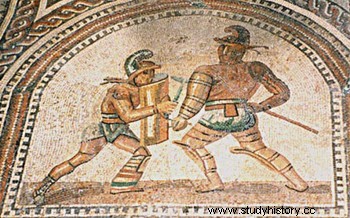
The difference between this current ideology and that of centuries ago is that animals were then treated as themes for philosophical debates and natural histories. They were part of the cultural imagination and were used in descriptions of people as well as in images of the divine. This cultural and religious debate is not often practiced in Western America. In other countries where religion still takes control of animals and eating meat, it of course still holds animals to a higher value in its specific society.
Pythagoras
Another group of great figures in the classical world was Pythagoras and his thinking, which contributed to society. He was an independent thinker, the first to take women into his intellectual circle on equal terms and argue that the world was a sphere. His teachings included that all animals should be treated as genus, including abstinence from meat. This was because he saw vegetarianism as a key factor for peaceful human coexistence. 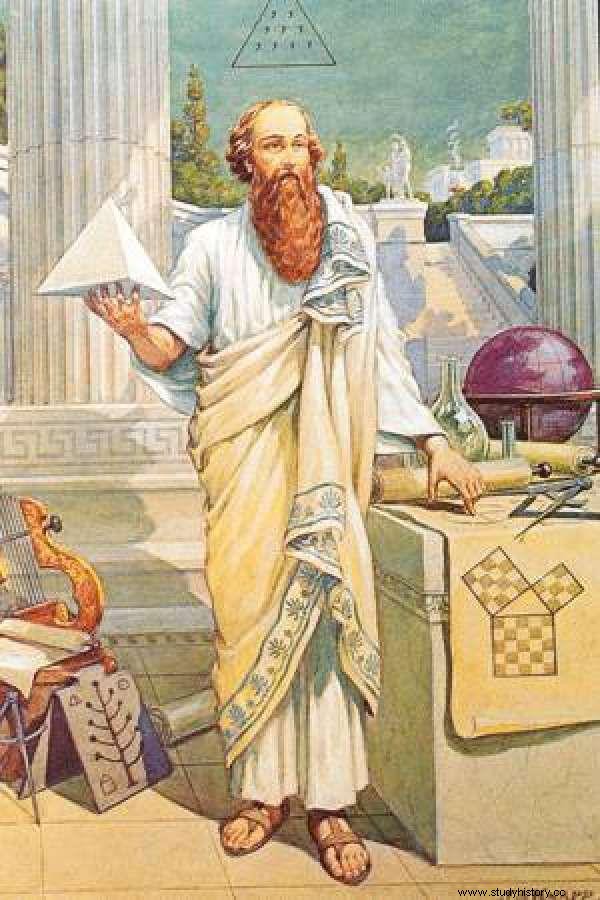 Pythagoras later inspired ancient Greek thinkers who then favored a vegetarian diet (such as Theophrastus.) sympathy with the brutality of ancient Rome.
Pythagoras later inspired ancient Greek thinkers who then favored a vegetarian diet (such as Theophrastus.) sympathy with the brutality of ancient Rome.
During the gladiatorial period, animals were treated harshly because they were murdered for entertainment and sports. However, the term 'Pythagorean' became synonymous with 'vegetarian' from the 3rd to the 6th century throughout the Roman Empire.
Eastern religions
Vegetarianism has always been central to Buddhism. Buddha and Pythagoras were almost exactly contemporaries, and it is possible that the Greek thinkers were influenced by such mystical teachings. It was also encouraged to refrain from eating meat in other Asian religions, such as Hinduism, Brahmanism and Jainism. They were simply doctrines of non-violence and respect for all life forms.
romantics
By bringing it to the 19th century, there were remarkable vegetarian figures who represented a variety of cultural expressions. Figures such as Dr. William Lambe (1765-1847) represented both the medical and literary worlds on this subject. Part of his circle included Mary Wollstonecraft and Dr. John Newton. Newton's family was involved in promoting the 'Vegetable Diet' and later led the creation of The Vegetarian Society.
The romantic poet Shelley became a vegetarian in 1812 and added a political dimension to the diet. At this time, the angle meat in people's lives usually involved the political distinction between rich and poor. Shelley argued that this dimension pointed to inefficient use of meat resources and how it was a cause of food shortages in society. In the 1880s, vegetarian restaurants became popular in major cities such as London, England. They offered cheap and nutritious meals to the general population.
How the war brought the meat back
The two world wars pushed Western diets back against meat. The vegetarian movement in the 19th century suffered from poor pressure, but was still a strong influence on many cultures, especially on Americans who eliminated many meat products from the diet. The problem began with how many countries suffered so much human loss. It took away from the respect factor for life as a whole.
This included treatment for animals. In war bases and over the years as a soldier, meat was often the only option to keep my stomach full. Because meat during this time was often seen as a treat, military men enjoyed eating a lot of meat, switching completely from the last decade's movement away from it. Many American and European civilians also felt the urge to see meat as a luxury, nothing to avoid. It was a symbol of status. As it became less accessible, more people wanted it, and more people appreciated it.
In Britain, during the wars, there were still some vegetarians of their choice. The speed of this went up compared to America. The reason for this was that the British government allocated a larger ration of cheese to those who registered as vegetarians. These dairy products were more attractive than tiny pieces of meat, and during the wars many people chose food that would feed the family above all else. This changed, however, as pork and beef became more available after the war. Once again, meat became a symbol that people believed in. It represented peace and prosperity, especially since there was a new post-war abundance of it.
More about after the wars
Factory farming did not take long to form because a large number of people wanted meat. In the 1950s and 60s, the population then became a little aware of the truth behind these intense factors. Vegetarianism appealed to the counterculture in the mid-1960s, as Eastern influences permeated Western popular culture. In the 70's, there was serious academic attention around ethics for animal welfare. Soon came the connection between vegetarianism and the earth's environmental issues.
In the 80s and 90s, serious attention to vegetarianism was seen as a process of change and conservation of resources. Information on how slaughterhouses and factory farming in large meat-eating countries such as the United States have multiplied in research over the last twenty years due to the seriousness of the topic.
Health effects and prospects
The meat industry, like many others today, is imported and exported to some countries. "The importance of pets increased the resistance of many" ordinary people from all over Britain. Some real health problems were raised when it was realized that some foods from the meat were infected with diseases such as "Mad Cow Disease" and Salmonella. In the 1980s, the focus was on living really healthy and the serious connection with food. This was when vegetarianism became more 'popular' again due to the health problems that directly involved the consumption of meat.
Research has found that eating meat regularly increases a person's risk of developing heart disease, diabetes and other life-threatening diseases. Oxford University published a study which found that eating red meat, processed meat and poultry meat at least three times a week was associated with a greater risk of no different diseases.
But when big organizations like the World Health Organization have developed meal plans for a "healthy" life that includes meat, what now? Are they guiding people towards a possible early death instead of lifelong good health? This brings another sub-topic to the discussion of the development of vegetarianism:is a vegan or vegetarian diet equal to good or perfect health? Not for everyone. But each country calls the shots differently because of this.
Food is part of propaganda. The meat and dairy industry is largely involved in manipulating people to eat certain foods that are advertised as healthy, but which are not. After all this history has been discussed, the current struggle between humans and animals is unlikely to include ethics as the main argument.
USA
From 1958 to 1992, the USDA Food Guide was a rectangle illustrating four food groups:dairy, meat, fruits / vegetables, and grains. When they released the controversial pyramid, it still took some time to replace it, eventually in 2005. MyPyramid became the new image of American health guidelines.
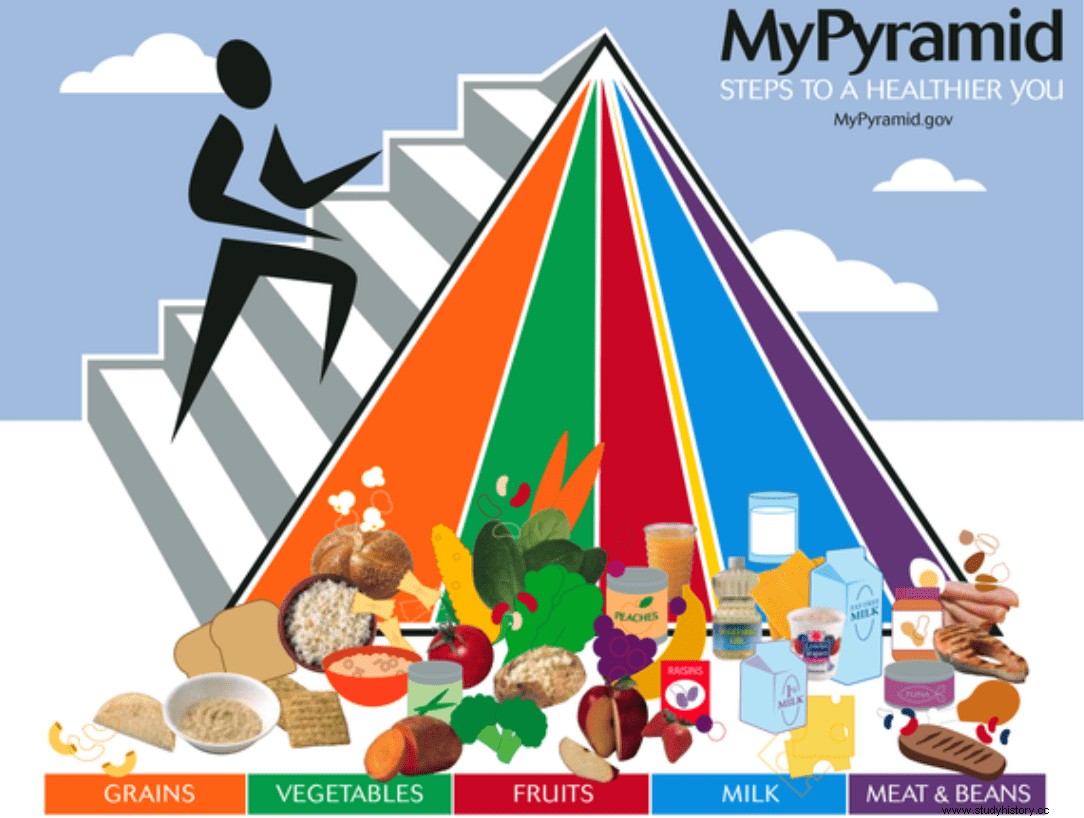
Once again, this model was replaced. It is now known as MyPlate, as a monitor. The pyramid made it confusing why some parts of the picture were larger than others, assuming the recommendation is to eat more grains than vegetables, for example. This dish now makes it easier to understand exactly how much an average person should eat. The biggest change is to label the meat part 'Protein' now. This allows for other dietary styles such as vegetarianism. Dairy is still a section, including a recommendation of skimmed cow's milk or yoghurt.
Japan
Japan's food guide is not a pyramid, but instead a spinner, which is a popular toy in the country. This guide is dish-based and contains traditional Japanese foods such as noodles, rice and seaweed. This guide also contains a lot of carbohydrates, such as grains and vegetables, but is low in fat. It is a controversial addition since many dietary trends in the United States require lowering grains and increasing fat in the diet. So what is it? 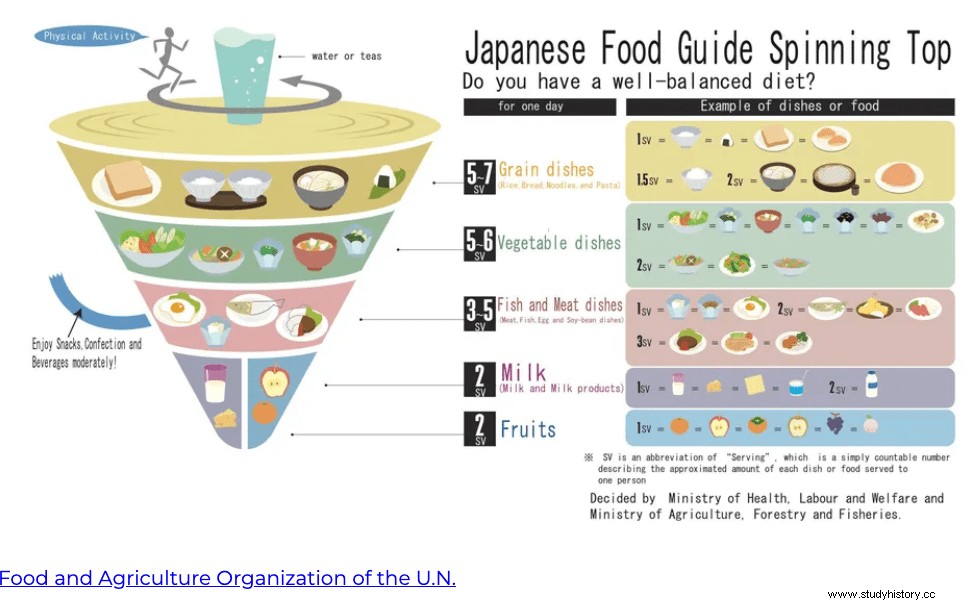
United Kingdom
The UK's Eatwell guide states that both cereals and fruits / vegetables should each make up a third of a person's total diet. Dairy still has a table by the table, and so does meat. But as in the United States, they specify that protein contains more than just meat and poultry products. 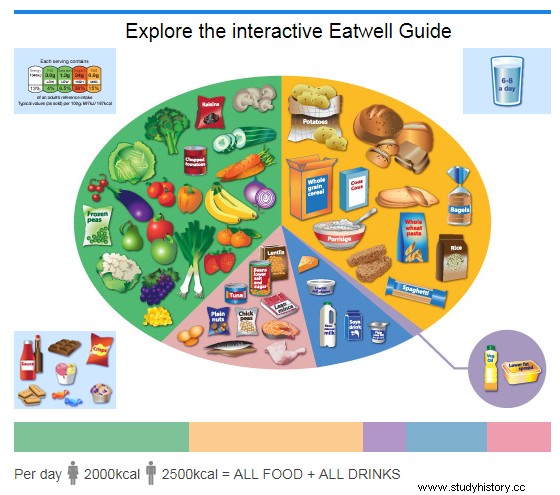
These are just a few examples of how each country has a different approach to recommending good health. It is rare to see a purely vegetarian or vegan diet as a country's total diet guide, but that does not mean that people do not follow a diet like them. With propaganda changing and giving more space to different alternatives to proteins such as beans and legumes, the history of vegetarian eating has already evolved quite a bit.
Nevertheless, there is a general concern about the necessity of meat in a person's diet, except that it is highly available and overproduced. The average person can buy meat products, so it does not make them as luxurious as they once were. And since these guidelines tell people to include meat, they will most likely structure each meal around a piece of meat. This may sound balanced, but it really is not. It is this model that led Americans to participate in more research into why diseases caused by eating meat have become very common.
the conclusion
The fact is:meat is not the same anymore. Ethics took the back seat in this conversation, and therefore slaughterhouses and factory farming are still a thing. Vegetarians and animal rights activists support the fear of animal cruelty and the serious lack of respect for their lives. In the periods discussed earlier, ethics and religion always participated in how animals were treated, which showed that even when people ate them, they kept animals of high value and status.
History has evolved and cut that part out of how we see animals. This eventually led to how we also treat the soil and the concern for the environmental impact of livestock farming. Overconsumption and demand for meat and dairy products are now not only leading to disease and obesity, but have also been shown to harm land and the environment. This is largely the case for Western culture in North America, but it is enough to do harm to create concern for the whole world.
Bibliography
Campbell, Denis. 2021. 'Eating meat' increases the risk of heart disease, diabetes and pneumonia. '"The Guardian. https://www.theguardian.com/food/2021/mar/02/eating-meat-raises-risk-of-heart-disease-diabetes-and-pneumonia.
Hultin, ginger. 2019. "A Snapshot of Vegetarianism and Its Impact on the Diet." Food and nutrition. https://foodandnutrition.org/from-the-magazine/a-snapshot-of-vegetarianism-and-its-impact-on-the-dietetics-profession/.
Nestle, Marion. 2011. "Goodbye, Food Pyramid:USAD announces a new" food icon. “The Atlantic. https://www.theatlantic.com/health/archive/2011/05/goodbye-food-pyramid-usda-to-announce-a-new-food-icon/239645/.
Saelid Gilhus, Ingvild. Animals, Gods, and Humans:Changing Attitudes toward Animals in Greek, Roman, and Early Christian Thought . Florence:Taylor &Francis Group, 2006. Accessed June 14, 2021. ProQuest Ebook Central.
The Vegetarian Society. 2021. "World History of Vegetarianism." Vegetarian Society. https://vegsoc.org/about-us/world-history-of-vegetarianism/.
Zaraska, Maria. 2016. "This is why vegetarianism was not captured until recently." Time. https://time.com/4220270/vegetarianism-history-meathooked/.
